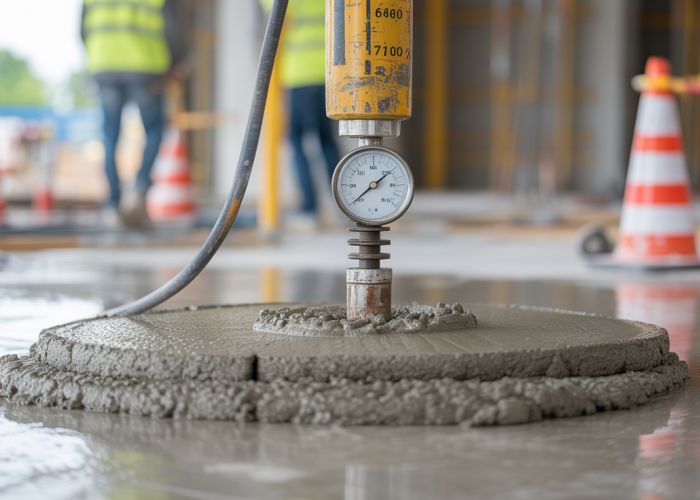Understanding concrete psi ratings is fundamental in ensuring structural integrity, and its application varies significantly across different construction projects. The American Concrete Institute (ACI), for example, provides standards and guidelines that directly influence these ratings. Properly selecting the appropriate concrete psi ratings is crucial. Analyzing the cylinder test results, a common method for assessing compressive strength, is another necessary step in validating a batch’s adherence to the project’s specifications. Selecting the wrong concrete with incorrect concrete psi ratings can have severe consequences. Furthermore, knowledge of concrete psi ratings, influenced by factors such as the water-cement ratio, contributes directly to the longevity and durability of any structure.

Crafting the Ultimate Guide to Concrete PSI Ratings
The "Concrete PSI Ratings: The Ultimate Strength Guide!" article should aim to be a comprehensive resource, providing readers with a clear understanding of what PSI ratings are, why they matter, and how they are used in various concrete applications. Here’s a suggested layout:
What is PSI in Concrete?
This section needs to establish the fundamental definition of PSI (Pounds per Square Inch) in the context of concrete.
- Defining PSI: Clearly explain that PSI is a measurement of compressive strength – the amount of pressure concrete can withstand before breaking.
- Why Compressive Strength Matters: Describe how PSI directly correlates to concrete’s durability, load-bearing capacity, and resistance to cracking and wear.
- Testing for PSI: Briefly introduce the standard testing method (typically involving cylinders or cubes subjected to compression until failure). Refer to relevant standards if possible (e.g., ASTM standards).
Understanding Common Concrete PSI Ratings
This section should delve into specific PSI ratings commonly used in different construction scenarios.
- Residential Applications:
- Driveways & Sidewalks: Typically require lower PSI ratings (e.g., 2500 – 3000 PSI). Explain why this is sufficient for these applications.
- Foundations: Need higher PSI ratings (e.g., 3000 – 4000 PSI) due to supporting the entire structure.
- Slabs: The PSI required for a slab will vary greatly depending on its intended usage.
- Commercial & Industrial Applications:
- Parking Lots: Require higher PSI (e.g., 4000 – 5000 PSI or higher) due to heavier traffic and loads.
- High-Rise Buildings: Demand significantly higher PSI (e.g., 5000 PSI and upwards) for structural integrity.
- Roadways & Bridges: May require specialized high-strength concrete with even higher PSI ratings.
Table of Common Concrete PSI Ratings and Applications
A table summarizing the information can provide a quick reference for readers:
| PSI Rating (approximate) | Typical Application | Explanation |
|---|---|---|
| 2500 – 3000 PSI | Driveways, Sidewalks, Patio Slabs | Suitable for light to moderate loads and residential use. |
| 3000 – 4000 PSI | Foundations, Interior Slabs | Provides good strength for supporting residential structures. |
| 4000 – 5000 PSI | Parking Lots, Light Commercial Floors | Stronger mix designed to withstand heavier loads and increased wear. |
| 5000+ PSI | High-Rise Buildings, Bridges | High-strength concrete required for demanding structural applications. |
Factors Affecting Concrete PSI Ratings
This section explores the elements that influence the final strength of the concrete.
- Water-Cement Ratio:
- Explain how a lower water-cement ratio generally leads to higher strength concrete.
- Describe the importance of proper mixing to achieve the desired ratio.
- Aggregate Type and Size:
- Discuss how different aggregates (e.g., gravel, crushed stone) affect the concrete’s strength and workability.
- Explain the influence of aggregate size distribution on the final PSI.
- Admixtures:
- Introduce various admixtures (e.g., water reducers, accelerators, retarders) and how they can be used to modify concrete properties and improve PSI.
- Provide specific examples of admixtures and their effects on strength.
- Curing Process:
- Emphasize the critical role of proper curing (maintaining moisture and temperature) in achieving the designed PSI.
- Discuss different curing methods (e.g., water curing, membrane curing). Improper curing may cause the concrete’s final strength to be much lower.
Selecting the Right Concrete PSI for Your Project
This section offers practical guidance to readers on choosing the appropriate concrete strength for their needs.
- Consider Load Requirements: Evaluate the weight and stresses the concrete will be subjected to.
- Environmental Factors: Account for exposure to weather, chemicals, and other environmental elements that could affect durability.
- Building Codes & Regulations: Refer to local building codes and regulations, which often specify minimum PSI requirements for different applications.
- Consult with Professionals: Advise readers to consult with structural engineers or concrete contractors for complex projects to ensure proper design and material selection.
Troubleshooting Common Concrete PSI Issues
- Low PSI Results: Describe the common causes of low PSI results in concrete testing (e.g., improper mixing, poor curing).
- Cracking & Spalling: Explain how inadequate PSI can contribute to cracking, spalling, and other forms of concrete deterioration.
- Remedial Actions: Briefly discuss potential remedial measures for addressing concrete with insufficient PSI (e.g., overlays, repairs).
So there you have it – the lowdown on concrete psi ratings! Hopefully, this guide has cleared up any confusion and empowered you to make smarter choices for your next project. Thanks for sticking around, and happy building!